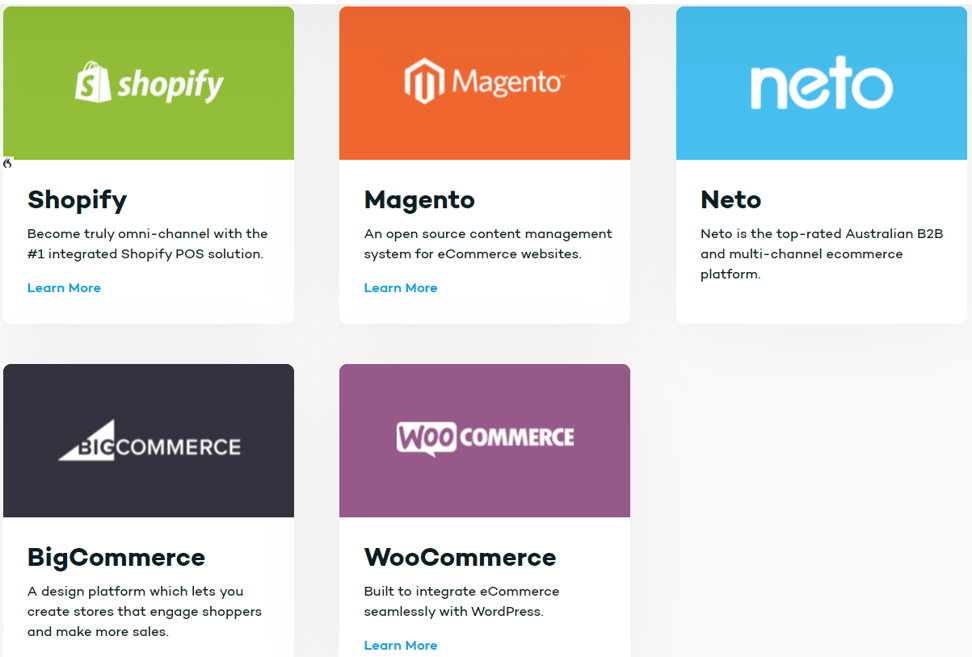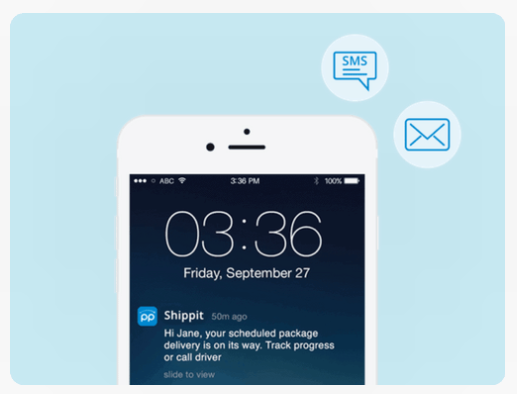Since Covid, retailers everywhere know that embracing change is vital. Having the agility and flexibility to move quickly is the name of the game, and moving from brick and mortar stores to online is now a critical part of that game in 2022.
Online sales have grown at a rapid pace in Australia and New Zealand. And when comparing online sales growth vs brick and mortar retail, there are some exciting figures. Statistics from Australia Post eCommerce Industry Report 2021 revealed that “In 2020, more than 1.3 million new households entered the online market”.
Plus, statistics show that today’s customers want to continue to shop online — with very few declaring they would NOT continue shopping online after Covid. As Australia Post wrote in their August 2021 Consumer Survey, “Of those who shopped online in 2020, only 3% indicated that they are unlikely to continue purchasing online post-Covid 19.”
But here’s another interesting point — many who shop online choose to do so with the brand names they prefer when physical shopping. They know and trust these brands, so they want to use them online as well. For example, they may want to go online purely to do research first or choose Click and Collect.
Consequently, retailers must meet the expectations of today’s consumers by integrating their bricks and clicks. Why? Because today’s new consumers demand it.
It’s no longer a case of bricks vs clicks or physical retail vs online retail. Consumers want both at their disposal as a seamless omnichannel retail experience.
And if you don’t meet their expectations, your competitors will.

The verdict is clear; if you haven’t done so already, it’s time to go online. In this guide, we’ll show you how to move from bricks and mortar only to also having an online presence. And, we’ll show you why it’s vital to integrate your bricks with clicks using powerful eCommerce POS software. Because by having just one set of data covering all operations, you’ll satisfy today’s new consumers in multiple ways and reap the rewards. Let’s dive in.
7 Benefits of moving your retail business online
Setting up an integrated bricks and clicks retail business model (aka omnichannel retail) will give you multiple benefits:
1. Reach more customers: There are only so many people you can attract with your bricks and mortar store — or stores.By having an online presence, you'll grow online sales and drive more foot traffic in-store. And providing you’re using the right software, you can offer Click and Collect, display live stock in-store (encouraging more sales) and create a wider brand awareness outside those who have previously only known your physical stores. Plus, you’re likely to appeal to younger or more time-poor customers than you have now.
2. Enhanced customer experience: By being available online, then integrating both bricks and mortar and online stores, you make it easier for the customer. There are always advantages of physical shopping and eCommerce. You give them more flexibility, more choice.The customer now has more options to research, inspect, and shop and more delivery and returns opportunities. Essentially, the customer now comes first. They are more like a VIP member who shops wherever they choose and expects the best service. Read more about how customer expectations are driving the omnichannel evolution here.
Improving customer experience doesn’t just boost sales, either. Give your customers a positive experience with your brand, and they’ll reciprocate that positivity — along with loyalty. And they’ll be more likely to become walking, talking brand ambassadors.
3. Set up Click and Collect (also known as BOPIS - Buy Online, Pick up In-Store). The statistics around Click and Collect are convincing. According to Power Retail, in 2019, 68% of customers in the United States had ordered an item online and picked it up in-store. In the UK, 72 % of shoppers use Click & Collect.
“A study from Cleveron shows that almost 50% of Aussie shoppers will buy additional items when picking up an order in-store.”
4. Make better business decisions through smart data & analytics: Move to an omnichannel strategy,and your data collection and reporting will change gears completely. You can make informed business decisions that drive revenue and increase profit margins— and free up more time for productivity.
Plus, you’ll get in-depth insights into your business with detailed analytics covering reports on inventory, financial reports, products, sales performance, suppliers, online and in-store performance, supply chain and customer analytics.

5. Profit from better branding: Adding and integrating an eCommerce store into your retail business will deliver a dramatically improved customer experience. This increases loyalty and branding.
.png?width=711&height=370&name=6241b2858e4876c7637aa663_Copy%20of%20Blog%20Image%20Template%20(2).png)
6. You’ll have one (or more) existing showrooms: As you already have a physical store, your new online customers can visit you if desired. At your physical store, they can connect with your brand and have a positive, real-life customer experience. It’s the pure-play eCommerce retailers’ unobtainable dream. Today, customers like several touch points before they purchase. So give them the freedom to purchase wherever they want.
7. Eliminate the burdens placed on your physical store. By adding an online store to your retail business, your business will benefit as well. Sales staff will enjoy less pressure, with customers being more informed about your product range(well-written online product descriptions will share the sales workload).
RELEVANT BLOG: Bricks versus clicks? Why not maximise your profits by integrating bricks and clicks?
“Omnichannel fulfilment’ is about the delivery, from the moment the customer places an order to when it arrives at the customer’s door.”
How to move your retail business online
Moving your physical store/s to include an online presence is a crucial business transition that you must plan and implement carefully. Let’s boil it down to 3 sections:
- ANALYSIS
- PREPARATION
- INTEGRATION
ANALYSIS: Do your research before moving online
Ask yourself the following questions:
Will my retail business work online?
There’s an ever-expanding range of products sold online. (A decade or two ago, selling shoes or clothes looked questionable; today, they are standard online items.)
Below is a list of the most common online retail categories:
- Furniture
- Fashion
- Homewares
- Footwear
- Sports & Outdoors
- Nutrition
- Pets
- Discount Variety
- Toys & Hobbies
- Rural Supplies
- Workwear
Small, lightweight items (vitamins, medications, jewellery) have always been winners online, but popularity can breed competition. So if your products don’t look like an immediate winner, don’t despair. Think creatively before you give up — you may pioneer an entirely new and niche online product.

How will customers find me online?
Your first eCommerce shoppers will likely be your bricks and mortar customers. Here are a few quick and easy strategies to let people know you’ve made the move:
- Embrace email marketing. Email your brick and mortar customer database to tell them you’re online. Encourage them to become online shoppers by giving them an incentive such as a small discount or gift if they shop online in the first month. (In time, as your database grows, you’ll need functional, reliable eCommerce POS software to collect customer profiles from all channels to create more specific, personalised marketing campaigns.)
- Create signage on your physical store window, telling people you’re online.
- Shout out the news on social media and include the URL in various social media artwork (e.g., header images, pinned posts, new ads). Make sure you add your eCommerce website address to all social media platforms.
- Update your Google My Business local listing. You can add the web address, create new posts and, importantly, list the products that you sell – and even include product photographs.
TIP: On your new website homepage, include a banner clarifying that you’re still open for business at your physical store/s. It’s been an ‘unprecedented time’, so be clear to customers that you haven’t closed your physical store doors but are now operating both.
Later, you’ll need new customers, and this will involve assessing relevant online marketing strategies, such as SEO (Search Engine Optimisation), Google Ads (Google AdWords) and social media (Facebook and Instagram).
Revisit your business plan
Ask yourself: Can you keep your brand consistent with the expansion? Will your customers follow you online? Today, it’s unlikely that they won’t. However, it’s ‘best practice’ to check your data, including online website analytics, email database and social media, and confirm that your audience will be confident to shop online.
The future for online sales continues to look bright, though. According to Australia Post 2021 eCommerce summary, “ABS Household Impacts of Covid-19 Survey, over a third of respondents indicated they prefer to shop online now more than they did before the pandemic.” These figures were even higher in Victoria and New South Wales.
Analyse your budget
Prepare for your spending to be different. When comparing brick and mortar vs click and mortar, costs are very different. You’ll save a motza on pricey, premium shopfront rental, fancy furnishings and on-the-ground sales staff. Instead, you’ll need to invest in a fast and flexible eCommerce platform, a stronger focus on digital marketing, fulfilment and point-of-sale software.
PREPARATION (Setting up online)
Domain name
Your domain name is the name of your website. It’s what comes after the “www.” Ideally, it should be the same as your shop name or similar.
IMPORTANT: Don’t keyword stuff your domain name. If your brand already includes a keyword, or you’d like to add one, it’s acceptable to include it in your domain name. But tread lightly.
For example, if your retail business is called ‘Sahara Shoes’, you should probably call your domain name saharashoes.com.au. If you market to ‘tall girls’ and you are keen to include a keyphrase, you can. Adding extra words can confuse your branding though, which is never a good idea. Plus, Google’s opinions on keywords in domain names appears to be changing. So don’t be caught out later. You need your domain name to stand the test of time.
ACCEPTABLE: (and most recommended): SaharaShoes.com.au
ACCEPTABLE: (but confuses your brand): SaharaTallGirlShoes.com.au
NOT ADVISABLE (clearly spammy): TallGirlShoesforPlusSizeWomen10-16.com.au
TIPS:
- Attempting to trick Google by keywords stuffing your URL is not advisable.
- Organise your domain name as soon as possible, as you don’t want competitors stealing your best choices.

How to choose your eCommerce website platform
When choosing an eCommerce website platform, do your homework and research thoroughly. Your eCommerce store will be your honeypot, so talk to people in the know to make an informed decision. Write a list of all your requirements and make sure the online store developers can deliver. When considering options, check that your eCommerce website includes:
- Great design that’s attractive and responsive and looks brilliant on any device
- Excellent navigation for ease and clarity
- Fast loading for user experience and SEO
- Optimal security
- Trustworthy payment processes
- Fast check out
- Transparent, easy to find freight and returns policies
- The ability to add pages and products easily
- User-friendly system
TIP: It’s crucial to choose an eCommerce platform that integrates with a powerful point-of-sale (POS) system. Without this, you won’t reap those coveted omnichannel benefits.

Retail Express offers an omnichannel point of sale system that integrates seamlessly with the following eCommerce platforms:
- Shopify (including deeper, direct integration)
- Magento
- BigCommerce
- WooCommerce
Payment gateways/options
Ensure that your payment gateway (e.g. eWay, SecurePay) is compatible with your website. It’s recommendable to give your customers the option to use PayPal, as many Aussies prefer it. In March 2021, PayPal had already accounted for 41% of all Australian online transactions.
TIP: Buy Now Pay Later (BNPL) is a popular option for Aussies when partaking in online and physical retail shopping. Key players include Afterpay, zipPay, Tyro, Linkly, Fiverv. and Skyzer payments. As these payment options are popular in-store and online, you’ll need a robust eCommerce POS software system such as Retail Express to integrate them.
Point-of-sale (POS) software
Expanding to an online shop means expanding to a new inventory setup. You must integrate your brick and mortar business and online stores using eCommerce point-of-sale software to reap massive rewards. And these rewards open up a wealth of opportunities:
- Real-time stock visibility (opening up more stock online)
- Maximise convenience with Click and Collect
- Centralised customer profiles to record shoppers’ history and details wherever they are
- Fulfil faster shipping with Ship from Store while giving staff and customers real-time updates (also more environmentally friendly and often less expensive)
- Be ready for anything – lockdowns, foot traffic restrictions
Retail products for eCommerce
When starting with eCommerce, keep your product range tight. Don’t throw every SKU up there. The aim is to make your website popular, filled with great-selling items. Fill it with everything, and you’ll dilute the shopping experience and make it harder to find best-selling items — causing customers to abandon your site. Make every item incredibly enticing.
In time, you can do some experimenting with your online product range, as you may discover some surprising gems. For example, good photography and excellent product descriptions may highlight previously slow sellers and become hot online items.
Product descriptions
Good product descriptions sell your products; bad ones leave customers confused, annoyed and unable to convert. So be the customers’ eyes, communicate the necessary details and keep the following in mind:
- Know your audience — Who are you talking to? What are their pain points (what will they overcome by purchasing your product)? Why is your product better than your competitors’ offerings?
- Include the right keywords — What are people searching for? If you’re selling a green lightweight waterproof backpack, try to keep the product name as close to these keywords as possible.
- Use descriptive words — ‘Awesome’, ‘gorgeous’ and ‘excellent’ are emotive words (at best) and don’t describe anything to the reader. When choosing your descriptive words, think of ‘why’ the reader is searching for your product. Do they want something ‘compact’, ‘easy to fold’, ‘all-season’, ‘sturdy’, ‘fast-drying’ or ‘ultra-soft’? These words give the reader helpful information.
Write a list, and check these words have search demand when combined with your product keywords. (e.g. all-season backpack, compact backpack, affordable backpack). Then add them to your main (stem) keywords. - Include product specs — You are selling online, so specific measurements and details are essential.
TIPS:
- Be the customers' eyes; include specific, useful details and don’t waffle.
- Many Australian eCommerce websites still fail to produce high-converting product descriptions, so don’t base your standards on your competitors. If they fail to hit the mark, you probably will, too. Raise the bar — and you’ll likely reap the rewards.

Product Photography
Your product photography is one of the first things a customer notices on your product pages. High-quality, attractive product photos convey value and trust in your business and can greatly affect conversions.
If you're not confident you can take excellent shots in-house, find an experienced product photographer. Here are some basic tips to keep in mind (however, you’ll need to test your images online to see which ones work best for your business):
Keep the background bland — Common bland backgrounds are black or white. They help keep your product as the centre focus.
Photograph in high resolution — You need detailed images to sell products online. Before publishing, though, you must optimise the images for speed (optimising the images makes them lighter. The trick is to do it without compromising too much on quality).
Keep photographs large — Check with your online store specs to see the correct size, but a basic rule of thumb would be 2000 x 2000 px.
Do not skimp on lighting — Purchase the appropriate lighting for your images. Your photographs won't survive without them.
Keep your sizing consistent — Align all products in the same position and crop images uniformly, with the same amount of margin between the product and the borders. To help achieve this, use a tripod and mark the product's position on the floor/table so you can replicate the same angles each time. Consistency keeps you looking uniform and professional.
Photograph the product from all angles — Customers want to see the product from all sides. Include as many angles as necessary — front, side, three quarters, rear. For certain items, like clothing or shoes, zoom in closer to see the stitching, pockets, specific details, etc.
Photograph all colours — Photographing the real deal is much better than changing the colour in photoshop afterwards.
Add reflections — reflections or shadows add depth to an image. You can achieve this with a small mirror, white cardboard or a piece of Perspex. Alternatively, you can add reflections in photoshop or a similar app in post-production.
Optimise your images for SEO — after cropping and editing your images, name them in a way that describes them E.g., Instead of IMG_2035875Ag32.jpg, name it blue-leather-dog-collar.jpg
NB: Keep the words in lowercase and connect them with hyphens.
When uploading images onto your website, you’ll need to alt tag them. Again, use keywords that describe your product. E.g., blue leather dog collar.
TIP: Testing your images for the best conversion is now essential. Experiment with various photographic angles. Add a lifestyle element (e.g., any supplementary detail, such as a flower in a vase that you may sell). Indicate the size of the product by placing it next to something that everyone knows. Try lifestyle images or different backgrounds rather than plain product backgrounds.
Order fulfilment/dispatch
Where possible, use your shop space for fulfilment. You’ll save money on rental space and conveniently have your store products on hand to dispatch. Providing you integrated both your bricks and clicks inventories, you can easily pull stock without confusing your inventory levels.
RELEVANT BLOG: Read how you can maximise your omnichannel sales with a single stock pool here.

Shipping costs, delivery options & information
Ensure every part of the customer experience is a happy one. Today’s customers don’t want any nasty surprises — especially not added freight costs — while checking out.
Use freight to your advantage
First, let’s look at how freight – and specifically freight at the right price — can be used to your business’s advantage:
- Increase conversions: Be clear about delivery costs, time and options, and customers will put their trust in you. Better still, find out what today’s consumer is prepared to pay for shipping and do not go over this amount.
- Incentivise sales: Offer free shipping over a certain amount and watch basket size increase.
- Expand your market: Offer free or discounted shipping to new areas.
“86% of consumers will abandon their cart if shipping costs are communicated too late in the shopping experience.”
Shipping costs
Shipping costs must be communicated clearly and early in the transaction, not at checkout.
“More online shoppers are influenced by shipping prices than product prices."
- Jungle Scout
According to Australia Post, 86% of consumers will abandon their cart if shipping costs are communicated too late in the shopping experience.
How much you charge for shipping can also significantly affect your conversions. According to a study of 1000 US consumers by Jungle Scout (Consumer Trends Report, Q4 2021), more online shoppers are influenced by shipping prices than product prices — or anything else.
The following statistics prove shipping options matter to customers:
- 72% of those surveyed said they look for the product with the lowest price on shipping.
- This was closely followed by 70% who said they look for the product with the lowest price.
- 66% indicated that they are looking for products with the fastest shipping.
Australia’s Power Retail recently referenced a report by Digital Commerce 360 with similar findings: “68% of online consumers are more likely to purchase an item online if the retailer offers speedy shipping.”
So what is speedy or fast shipping? The answer appears to forever be ‘faster than before’. Pre-Covid days, consumers mainly were prepared to wait a day or two.
Now, one-third of respondents from the Digital Commerce survey who ordered goods online requested same-day delivery from a pureplay retailer. And, 26% of online shoppers wanted same-day delivery for an omnichannel retailer in the last six months.
Finally, if you don’t know the shipping amount (due to parcel sizes/postcodes), inform customers that a shipping calculator will provide exact costs at the next step.
Delivery information
Communication is critical when providing delivery information.
In an Australia Post survey of over 2000 people who received a domestic parcel in February 2021, 60% said certainty around the timing of delivery was more important than getting it quickly. In the same survey, free delivery over a certain threshold was essential to 81% of shoppers.
TIPS:
- Build customer confidence by being clear on delivery times before they purchase
- Offer low-cost or free delivery whenever possible
- Offer fast shipping whenever possible
- Give customers regular updates on shipping progress
- When emailing customers, use your business email, not your personal email

Collection, delivery & shipping options
Before there was excellent software, an online retailer would need to shop around find the right freight companies (we say ‘companies’ — as most retail businesses need more than one freight company to accommodate various issues). Fortunately, we now have excellent software that makes delivery and shipping options easier.
For example, Retail Express integrates with the order fulfilment and shipping automation platform Shippit. This platform makes omnichannel fulfilment far easier. It enables Ship from Store, Store to Door and other omnichannel fulfilment options. You can instantly access discounted delivery rates with Australia and New Zealand’s leading couriers and offer various delivery options such as Standard, Express, Same-day or International. You can split or partially fulfil orders based on stock availability across your locations. And, you can offer your customers real-time branded shipping status tracking. Find out more about Shippit here.
TIP: Today’s new consumer also wants the choice to collect their goods. Adding Click and Collect is now highly recommended. According to Australia Post and Power Retail Insights, August 2021, 31% of consumers will abandon their cart if Click And Collect is not offered.
Shipping & Refund Policy
Be clear, concise and informative with your shipping and refund policy. Keep the wording in your brand language and make it easy for the customer to read. A high percentage of new customers read the returns and exchanges policy before making an online order, so make this clear on your website, and include it in several areas other than your website footer.
In your policy, ensure you cover a few basics, such as:
- Which items can be exchanged
- Which items can be returned
- Any ‘sale close’ items that are not returnable or exchangeable
- How the goods must be returned and in what condition (e.g., placed back in packaging, swing tags on, original condition, not washed, etc.)
- How to start the exchange process (e.g. provide a form, email address, etc.)
Additionally, you should be clear on the anticipated time for refund or store credit, shipping fees, damaged goods and contact details.
INTEGRATION: Integrate your bricks & clicks
Once you’ve launched your retail business online, it’s deservedly time to pop the champagne corks. But remember, there’s still one more vital step to go. Next, you need to integrate your bricks with your clicks.
Choose the right software system that can integrate with a variety of leading business software for all your retail needs: eCommerce, payments, marketplaces, accounting, analytics, marketing, , Payroll & Workforce Management, 3PL and more. You’ll need software that can handle complexities to truly satisfy new customers’ demands, get up to speed with your competitors and reap maximum profits.
TIP: Look for a software solution that does more than offer vague promises of ‘integration’. Many cheap or free software solutions look attractive initially but fail when your business grows. Ensure that the software you choose has the technical depth required; it should be secure, cloud-based, agile and have POS eCommerce integration capabilities to handle complexity.

.png?width=960&height=540&name=6241b004a3fe3b73af6869a6_Untitled%20design%20(39).png)